In theory, Nissan's Navara should be flying out of showrooms. After all, the Australian car market is in love with 4x4 dual cab utes – particularly those that are more likely to adorn a suburban driveway than a construction site.
Nissan saw the trend towards family dual cabs coming and designed its brand new Navara to suit the daily life of a soccer dad or mum as much as it did the hard-hatted workplace supervisor's role. But while competitors like Toyota's HiLux and Ford's Ranger sell in big numbers, the Navara hasn't kept pace.
So Nissan has gone back to the drawing board, tweaking and massaging a few key mechanical elements to see if they can give the Navara (the NP300 code has been dropped, by the way) a new lease on life with the Series II.
Nissan Navara 2017: St (4X4)
| Engine Type | Diesel Turbo 4, 2.3L |
|---|---|
| Fuel Type | Diesel |
| Fuel Efficiency | 7.0L/100km (combined) |
| Seating | 5 |
| Price From | $27,940 - $33,660 |
| Safety Rating |
|
Is there anything interesting about its design?
7 / 10
There's no doubt Nissan really pushed the boat out when it came to the external design of the Navara. It's not that conservative from most angles, especially around the front with a large, almost American visage of pumped front guards, a large, bluff chrome grille, and the brand's 'waterfall' front end treatment.
The ST's specs add to the design story, with LED running lights and headlights fitted as standard. Sixteen-inch alloys set off the look, while the rear end is much more sedate and restrained.
.jpg)
The Navara also features a small lip on the edge of the tailgate which is designed to rest drinks and food on while lounging around the back, but it's a bit incongruous given the presence of a pretty large table in the form of the tailgate itself...
Inside, the cabin is more passenger car than rugged workday ute, with gentle curves, sculpted plastics, hints of silver and piano black trim and a very car-like ambiance.
How practical is the space inside?
8 / 10
As the dual cab ute continues on its journey of being the pseudo-family car of choice for many Australians, the Thai-made Navara follows this trend by offering a large, comfortable, and relatively useful space in which the family can operate.
Up front, the seats are comfortable with a high quality cloth facing and are sufficiently well-bolstered and cushioned for longer journeys. There are two cupholders in the front, while each of the doors gets a bottle holder and door storage. There's a large storage tray under the dash, although it is slightly impeded by the fitment of an aux-in and a USB port panel, which does take up some space.
.jpg)
One drama of dual cab ute ownership is the inclination of the rear seat rests – or lack thereof, more specifically. The Navara isn't the worst in this regard, thankfully, but it's not the best, either; some passengers complained of feeling a bit too upright when seated in the rear.
Of course, there's plenty of headroom and lots of legroom as well for rear seaters. The ST provides vents to the second row of seats, while curtain airbags extend all along the side of the car. There are no ISOFIX child restraint mounts in the Navara, but there are three top tether anchor points.
.jpg)
For the driver, there's a digital screen between the two dash dials that provide a wealth of different settings. Unfortunately, there's no digital speedo; it's got literally everything else imaginable except a digital speedo. It's kind of dumb, to be honest.
Otherwise, instrumentation is well designed and very easy to read. The touchscreen multimedia system, while looking perhaps a little dated in its appearance, is still functional and works very well.
It connects a phone quickly and easily, while the map offers speed limit information, which is excellent. The stereo itself sounds fine, as well.
In day-to-day use, the Navara does little wrong. Visibility is good and, being a ute, there's plenty of shoulder, leg and headroom. Speaking of the utility part of it, our car had a plain metal tray, which featured metal tie-down rings, a 12 volt power point to the rear, and the aforementioned electric sliding glass hatch, which is a pretty novel feature.
.jpg)
The Navara weighs in at 1960kg in auto form, with a gross vehicle mass figure of 2910kg at the curb, and has a gross combined mass of 5910kg. Nissan claims a 3500kg braked trailer towing capacity, leaving you with 450kg of payload (that needs to account for passengers as well as gear) left over at the maximum.
If you're not towing anything, the bed can hold 941kg.
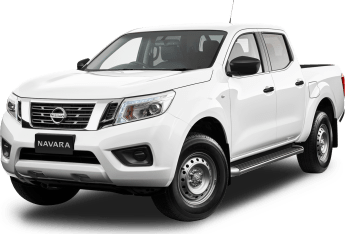
Does it represent good value for the price? What features does it come with?
7 / 10
At $49,490 RRP for the auto (a $1000 jump over the Series I), the ST is second from the top of the price range for the Navara. It's pretty well appointed with auto headlights, a touchscreen multimedia entertainment system with sat nav (new for the Series II), Bluetooth streaming, and more.
Dollar for dollar, the auto-equipped ST is a bit dearer than its rivals.
A leather-clad steering wheel and cloth-trimmed seats, powered external mirrors and windows, and a neat, electrically powered sliding rear window on the rear-facing glass are also included.
Dollar for dollar, the auto-equipped ST is a bit dearer than its rivals, including the Ford Ranger XLS ($48,890), Mitsubishi's Triton Exceed ($48,000) and the Toyota HiLux SR at $48,490.
What are the key stats for the engine and transmission?
7 / 10
The (YS23-DDTT) 2.3-litre twin-turbo four-cylinder diesel makes 140kW of power at 3750rpm, and 450Nm of torque from a low 1500rpm. You're never going to mistake it for anything other than an oil-burner; the little engine works hard off the line and makes its presence known in the cabin, but once at a cruising speed, it settles down nicely.
.jpg)
The seven-speed automatic works well plugging around town, as well as on the open road, teaming up neatly with the torquey 2.3-litre to find the right ratio at the right time. It can be overridden and used in manual mode, too, and the ST comes equipped with a low range switch. This allows you to engage four-wheel-drive low-range on the fly if you really want to get the tyres dirty.
.jpg)
Noise levels inside the cabin are acceptably low for a dual cab ute. As a rule they are intrinsically more noisy thanks to larger, stiffer mixed terrain tyres, while the basic construction of the car is not as soundproof as your typical sedan, but the Navara does a good job. As a highway cruiser, it's quiet and comfortable to travel in, while around town it's sufficiently manoeuvrable.
How much fuel does it consume?
8 / 10
Against a claim of 7.0 litres per 100km, we recorded a figure of 7.9L/100km over 240km of testing. With an 80-litre tank, expect to travel about 800km on a single fill.
What's it like to drive?
8 / 10
One of the Navara's biggest points of difference is the fact that the N23 series dual cab 4x4 utes were equipped from the outset with multi-link coil sprung suspension at the rear, instead of more traditional leaf springs.
The advantage of the coil sprung system is that the ride with no cargo aboard is softer and more supple than the ride in a leaf spring-equipped vehicle, which is designed to accept a larger payload.
Its mechanical steering may lack the finer touch at parking speeds of competitors like the Toyota HiLux, but it suits the character of the Navara very well.
Nissan figured - quite rightly - that the average Navara 4x4 dual cab would not spend most of its life loaded up with bricks and fence palings, and so opted to set it up for more everyday comfort.
The biggest issue is they went too far towards the comfort end of the spectrum at launch, and initially produced a car that wasn't - even for a dual cab ute - particularly precise or pleasant to drive.
To Nissan's credit, its engineers have gone back to the drawing board for this update, fitting firmer shocks front and rear, and making some other tweaks (specifically, retuning the rear rebound characteristics) to tidy up the handling without making it too firm.
.jpg)
In use now, it feels more like one of the new generation of 4x4 wagons than it does a typical ute. It rides bumps with a confidence and maturity that wasn't there before. Equally, its roll control (the way the body rolls side to side and front to back) is a lot nicer now, eliminating the wallowy, queasiness-inducing ride of the first gen Navara N23.
Its mechanical steering may lack the finer touch at parking speeds of competitors like the Toyota HiLux, but it suits the character of the Navara very well.
Warranty & Safety Rating
What safety equipment is fitted? What safety rating?
8 / 10
The Navara scores a maximum ANCAP five star rating, thanks in part to driver and front passenger front and side airbags, driver's knee airbag and side-curtain airbags.
Brake force distribution is offered, but there's no auto emergency braking (AEB), blind spot detection or forward collision alert. LED daytime running lights and a reversing camera are included.
What does it cost to own? What warranty is offered?
8 / 10
Nissan offers a three-year/100,000km warranty for the Navara range. A three year 24-hour roadside assistance package is also included.
Service intervals are specified at 12 months or 20,000km, while a capped price servicing program is offered for the first six scheduled services up to 120,000km, with costs varying between $547 and $738 per service.
Verdict
If you're looking for a ute that's less about the work site and more about the playground, but still has those attributes that makes a ute appealing (like off-road ability, load-carrying capacity, and towing), then the Navara is definitely worth a look.
With any luck, the changes to the Navara will help kick it along in the sales race against its more successful competitors. The styling may still polarise opinion, but all in all this is a solid return to form for a company that knows what it's doing when it comes to dual cab utes.
Are you in the market for a 4x4 dual cab ute? Does the Nissan Navara appeal? Tell us why or why not in the comments below.
Pricing Guides






.jpg)


.jpg)




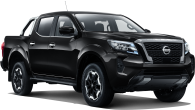



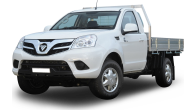

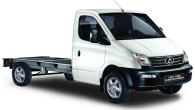

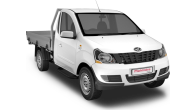


.jpg)




